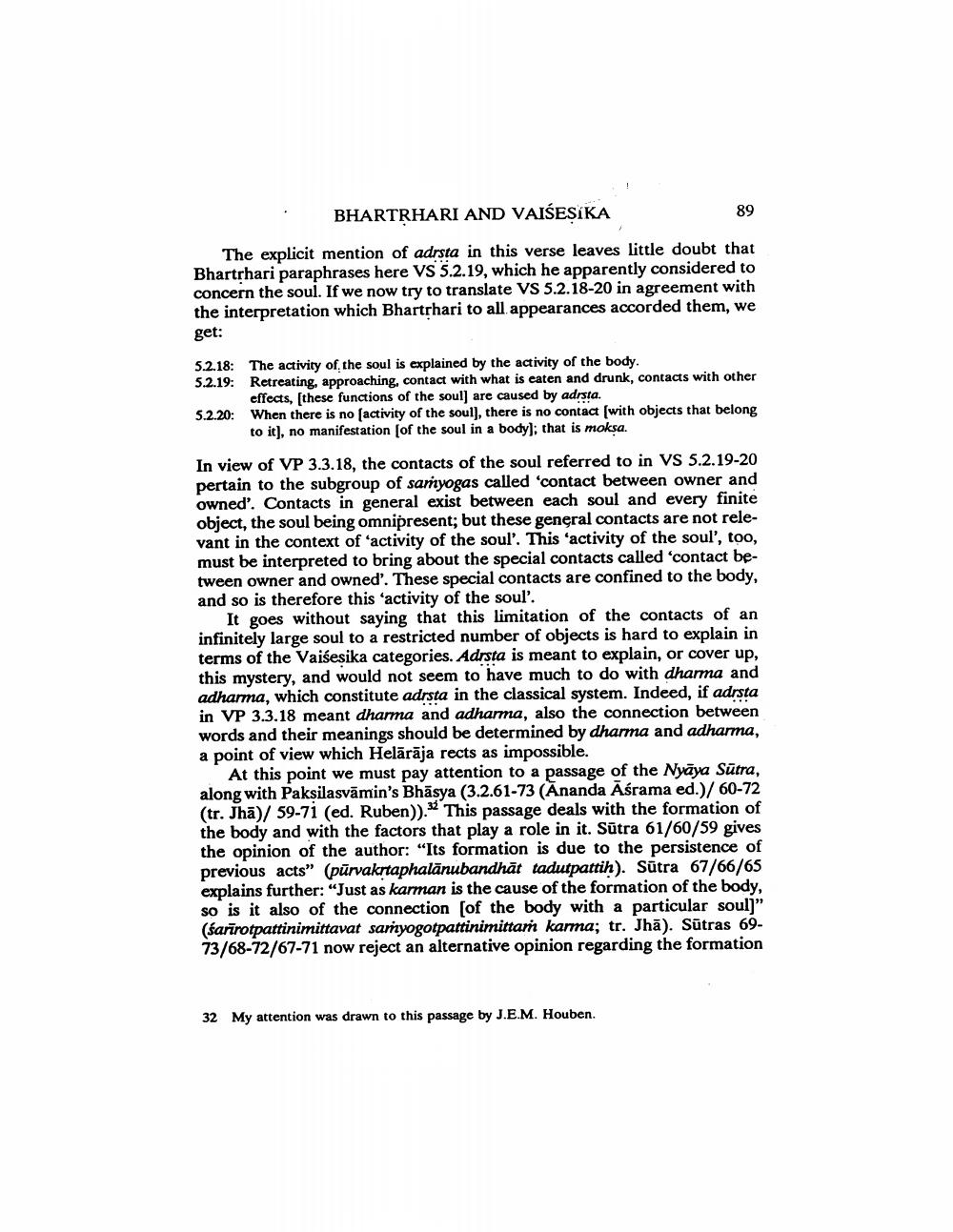________________
BHARTRHARI AND VAIŚESIKA
89
The explicit mention of adrsta in this verse leaves little doubt that Bhartrhari paraphrases here VS 5.2.19, which he apparently considered to concern the soul. If we now try to translate VS 5.2.18-20 in agreement with the interpretation which Bhartrhari to all appearances accorded them, we get:
5.2.18: The activity of the soul is explained by the activity of the body 5.2.19: Retreating, approaching, contact with what is eaten and drunk, contacts with other
effects, (these functions of the soul] are caused by adrsta. 5.2.20: When there is no (activity of the soul], there is no contact (with objects that belong
to it), no manifestation (of the soul in a body); that is moksa.
In view of VP 3.3.18, the contacts of the soul referred to in VS 5.2.19-20 pertain to the subgroup of saryogas called 'contact between owner and owned'. Contacts in general exist between each soul and every finite object, the soul being omnipresent; but these general contacts are not relevant in the context of 'activity of the soul'. This 'activity of the soul', too, must be interpreted to bring about the special contacts called 'contact between owner and owned'. These special contacts are confined to the body, and so is therefore this 'activity of the soul'.
It goes without saying that this limitation of the contacts of an infinitely large soul to a restricted number of objects is hard to explain in terms of the Vaišesika categories. Adrsta is meant to explain, or cover up, this mystery, and would not seem to have much to do with dharma and adharma, which constitute adrsta in the classical system. Indeed, if adrsta in VP 3.3.18 meant dharma and adharma, also the connection between words and their meanings should be determined by dharma and adharma, a point of view which Helārāja rects as impossible.
At this point we must pay attention to a passage of the Nyāya Sūtra, along with Paksilasvāmin's Bhāsya (3.2.61-73 (Ananda Aśrama ed.)/60-72 (tr. Jhā)/ 59-71 (ed. Ruben)). This passage deals with the formation of the body and with the factors that play a role in it. Sutra 61/60/59 gives the opinion of the author: "Its formation is due to the persistence of previous acts” (pūrvakrtaphalānubandhāt tadutpattih). Sūtra 67/66/65 explains further: "Just as karman is the cause of the formation of the body, so is it also of the connection (of the body with a particular soul]" (śarīrotpattinimittavat samyogotpattinimittaṁ karma; tr. Jhā). Sūtras 6973/68-72/67-71 now reject an alternative opinion regarding the formation
32 My attention was drawn to this passage by J.E.M. Houben.




